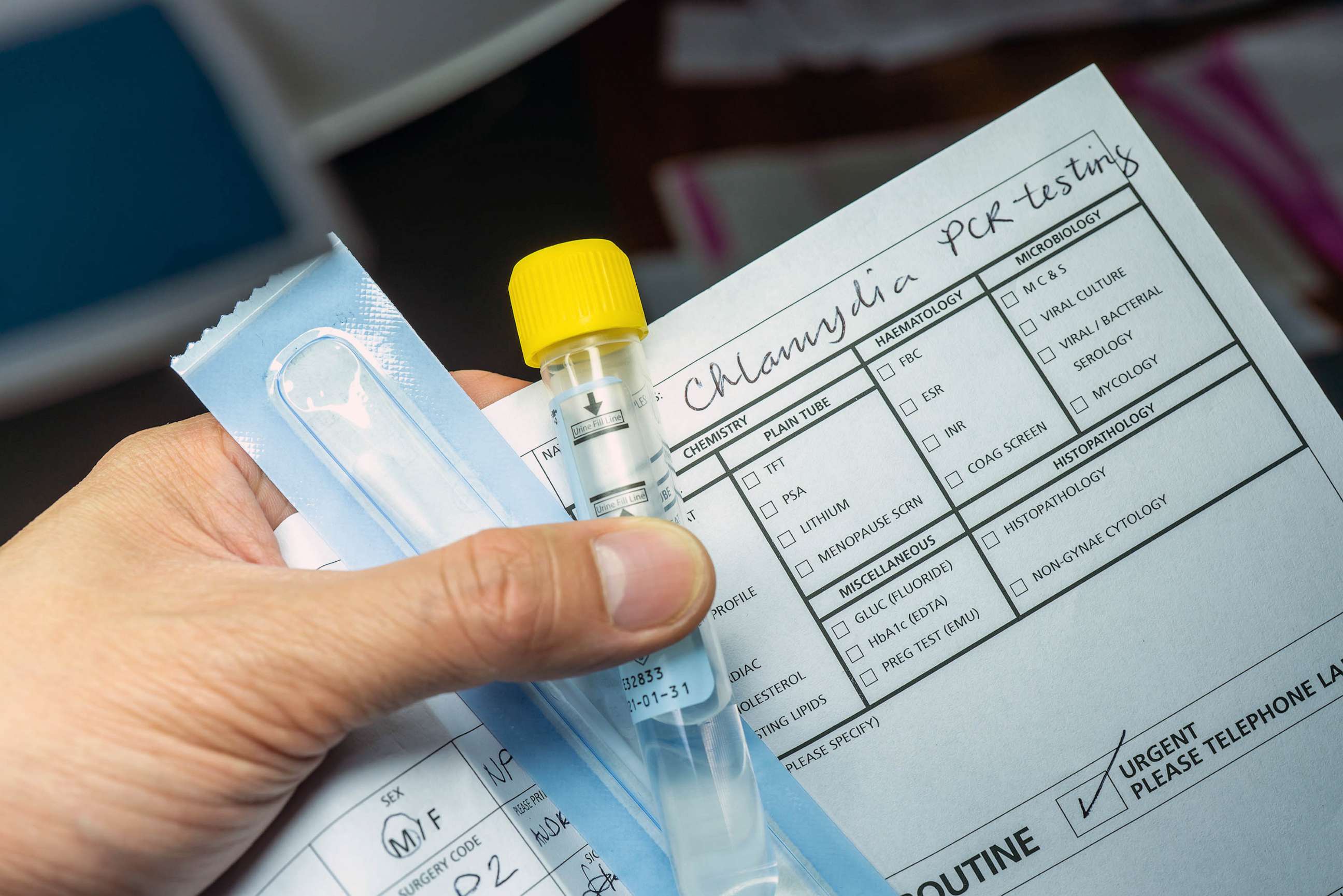Syphilis cases at highest levels in 70 years in alarming trend
Syphilis cases reached their highest level since 1950, the report found.
The number of sexually transmitted infections (STIs) in the United States shows "no signs of slowing," new federal data shows.
A total of 2.53 million cases of chlamydia, gonorrhea and syphilis were recorded in 2021, according to a new report published Tuesday from the Centers for Disease Control and Prevention.
That's a 5.8% increase from the 2.39 million cases reported in 2020 and a 7% increase from five years ago when 2.37 million STIs were recorded in 2017.
"I'd like people to understand that this data actually impacts them whether they think it does or not and it's because STIs happen to everyone, regardless of socioeconomic, religious, political lifestyle," Dr. Kameelah Phillips, an OBGYN in New York City, told ABC News. "I'd like them to really understand that routine testing at their health care office is super important ... gonorrhea doesn't care who you are."
While certain STIs did not reach pre-pandemic levels, others -- such as syphilis -- are recording the highest numbers seen in more than 70 years.
A total of 176,713 syphilis cases -- for all stages of the infection -- were recorded in 2021, the highest since the 217,558 cases reported in 1950 and a 32% increase from the 133,954 recorded the previous year, the report said.

The report also found that cases of congenital syphilis, which occurs when a baby is born with the infection after the mother passed it on during pregnancy, rose by 32% from 2,148 to more than 2,800. This resulted in 220 stillbirths and infant deaths in 2021, the agency said.
"Congenital syphilis has the potential to have dire consequences for a developing fetus and baby, and so because the impact has such lifelong consequences for someone who's born with congenital syphilis, we really need to identify and treat early," Phillips said. "It can be very detrimental and it's easily treatable with available medicines such as penicillin."
Meanwhile, gonorrhea rates increased 4% from 206.5 per 100,000 to 214.8 per 100,000. Rates of chlamydia -- which make up the majority of STIs -- also rose by about 4% from 481.3 per 100,000 to 500 per 100,000.
Phillips said the increase in numbers doesn't surprise her.
"During 2021, I certainly saw fewer patients coming into the office for obvious reasons," she said. "But we know, as humans, we're still having relationships and so it was just a matter of time before people returned."
She continued. "Upon that return, I really started to notice, even in my own office, a rise in both gonorrhea and chlamydia, so unfortunately not a surprise."
Phillips added that many patients didn't even come in specifically for STIs screenings; the infection just happened to be caught during a routine visit.
However, unlike gonorrhea and syphilis, reported cases of chlamydia did not return to pre-pandemic levels, the CDC said.
The CDC cautioned that because the disease is typically asymptomatic, these decreases were more likely due to COVID-19-related disruptions than to drops in infections.
According to the CDC, STIs fell rapidly during the COVID-19 pandemic, particularly in March and April 2020, during shelter-in-place and stay-at-home orders.
This is due to reduced screenings because many health care clinics either closed or had limited in-person appointments in the early days of the pandemic, limited resources due to programs shifting to help combat COVID-19 and social distancing measures limiting sexual behaviors and activity.
In response, the federal health agency is calling for more action from health care and public health experts with a focus on STI prevention and innovation efforts.

This includes rebuilding and expanding local public health services to offer STI testing and treatments, making these testing and treatment options more accessible and advancing research to prevent STIs through vaccines or post-exposure prophylaxis.
"The U.S. STI epidemic shows no signs of slowing," said Dr. Leandro Mena, director of the CDC's division of STD prevention, in a statement. "The reasons for the ongoing increases are multifaceted -- and so are the solutions. For the first time in decades, we're seeing promising new STI interventions on the horizon, but these alone will not solve this epidemic."
The statement continued, "It will take many of us working together to effectively use new and existing tools, to increase access to quality sexual healthcare services for more people, and to encourage ongoing innovation and prioritization of STI prevention and treatment in this country."




